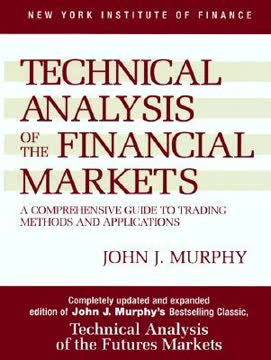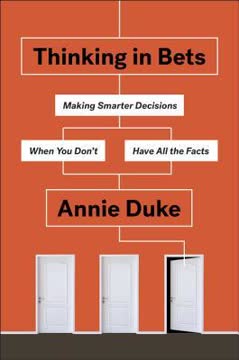つの重要なポイント
1. 経済指標は市場動向を予測し、情報に基づいた投資判断を行うための重要なツールである
「経済がどこにあったのか、どこにあるのか、そしてどこに向かっているのかを知りたいなら、ここから始めよう!」
経済指標の力。 経済指標は、経済の健康状態や方向性を示す統計的な測定値である。これらは投資家、政策立案者、企業にとって情報に基づいた意思決定を行うための重要なツールである。これらの指標を分析することで、経済動向を予測し、潜在的な投資機会を特定し、リスクを軽減することができる。
指標の種類。 経済指標は主に3つのカテゴリーに分類される:
- 先行指標:将来の経済イベントを予測する(例:住宅許可、株式市場のパフォーマンス)
- 同時指標:現在の経済状況を反映する(例:GDP、雇用率)
- 遅行指標:長期的なトレンドを確認する(例:失業率、企業利益)
指標の効果的な使用。 経済指標の価値を最大化するためには、以下が重要である:
- 包括的な視点を得るために複数の指標を監視する
- 各指標の文脈と限界を理解する
- 孤立したデータポイントではなく、トレンドやパターンを探す
- 異なる指標間の相互作用を考慮する
2. 消費指標は消費者行動と経済の健康状態に関する洞察を提供する
「アメリカ人は物を消費するのが大好きで、消費は我々の経済全体の健康にとって重要な部分である。」
消費の重要性。 消費者支出は米国経済の約70%を占めており、経済成長の重要な推進力である。消費指標を監視することで、投資家や政策立案者は経済全体の健康状態を把握し、将来の動向を予測することができる。
主要な消費指標には以下が含まれる:
- 自動車販売
- チェーンストア売上
- 消費者信頼感
- 既存住宅販売
- 不完全雇用またはスラック
消費データの解釈。 消費指標を分析する際には、以下を考慮する:
- 短期的な変動ではなく長期的なトレンド
- 消費者行動の季節的な変動
- 外部要因の影響(例:政府の政策、世界的なイベント)
- 異なる消費指標間の関係
3. 投資指標はビジネスの信頼感と将来の経済活動を明らかにする
「半導体は家庭や職場で多くのクールなガジェットに使用されているため、半導体ビジネスの健康状態を見ることで、広範な経済の健康状態や特定の技術セクターの健康状態について洞察を得ることができる。」
経済のバロメーターとしてのビジネス投資。 投資指標はビジネスの信頼感と将来の経済活動に関する貴重な洞察を提供する。これらの指標を監視することで、投資家は経済サイクルの変化を予測し、セクター別の投資に関する情報に基づいた意思決定を行うことができる。
主要な投資指標には以下が含まれる:
- ブック・トゥ・ビル比率(半導体業界)
- 銅価格
- 耐久財受注
- 住宅許可と着工
- 工業生産と設備稼働率
投資データの分析。 投資指標を解釈する際には、以下を考慮する:
- 複数の指標にわたるトレンドを探す
- 伝統的な指標に対する技術進歩の影響を考慮する
- ビジネス投資と消費者支出の関係を評価する
- 投資パターンに影響を与える業界特有の要因を考慮する
4. 政府支出と赤字指標は経済の安定性と将来の成長に関する手がかりを提供する
「政府が税収として受け取る金額よりも多くのお金を使うと、その結果は赤字と呼ばれる。それは予算の大きな穴のようなものである。」
経済における政府の役割。 政府支出と赤字指標は、財政政策、経済の安定性、将来の課題に関する洞察を提供する。これらの指標は、投資家が金利、インフレーション、全体的な経済成長の変化を予測するのに役立つ。
主要な政府指標には以下が含まれる:
- 連邦政府の予算赤字
- 国の債務水準
- 政府支出のパターン
政府データの解釈。 政府指標を分析する際には、以下を考慮する:
- 赤字と債務の長期的な影響
- 異なる経済セクターに対する政府政策の影響を評価する
- 政府支出と民間セクターの活動の関係を評価する
- 税政策の変化とそれが企業や消費者に与える潜在的な影響を監視する
5. 純輸出指標は世界経済の動向と通貨の動きを明らかにする
「経常収支は技術的には貿易収支に利子や配当からの純収入、純外国援助を加えたものである。」
国際貿易の重要性。 純輸出指標は、国の競争力、通貨の評価、全体的な経済健康状態に関する洞察を提供する。これらの指標は、国際市場や通貨取引に関心のある投資家にとって特に価値がある。
主要な純輸出指標には以下が含まれる:
- バルチック海運指数
- ビッグマック指数
- 経常収支赤字
- 石油在庫
- 短観調査
- TICデータ
純輸出データの分析。 純輸出指標を解釈する際には、以下を考慮する:
- 為替レートが貿易収支に与える影響
- 輸出と国内経済成長の関係を評価する
- 世界経済の状況が貿易パターンに与える影響を評価する
- 貿易政策の変化とそれが特定の産業に与える潜在的な影響を監視する
6. 複数のコンポーネント指標は経済の健康状態を包括的に示す
「ADS指数は異なる時期のビジネス状況を比較するために使用されることがある。」
包括的な指標の力。 複数のコンポーネント指標は、さまざまな経済指標を組み合わせて、経済の健康状態をより全体的に示す。これらの指標は、経済状況や潜在的な転換点を広く理解しようとする投資家にとって特に有用である。
主要な複数のコンポーネント指標には以下が含まれる:
- ベージュブック
- クラックスプレッド
- クレジットアベイラビリティオシレーター
- フェデラルファンド金利
- 一人当たりGDP
- イールドカーブ
複数のコンポーネントデータの解釈。 これらの指標を分析する際には、以下を考慮する:
- 異なるコンポーネントの相対的な重み
- 経済の変化を示す可能性のあるコンポーネント間の乖離を探す
- 経済動向を予測する際の指標の過去のパフォーマンスを評価する
- より具体的な経済指標と併用して複数のコンポーネント指標を使用する
7. インフレーション、恐怖、不確実性指標は潜在的な経済的混乱を示す
「VIXが1日に20%以上急上昇するとき、それはブルマーケットであろうとベアマーケットであろうと、市場を買うのに非常に良い時期であることが多い。」
市場心理の影響。 インフレーション、恐怖、不確実性指標は、市場心理と潜在的な経済的混乱に関する貴重な洞察を提供する。これらの指標は、投資家が市場のボラティリティを予測し、リスク管理の意思決定をより情報に基づいて行うのに役立つ。
主要なインフレーション、恐怖、不確実性指標には以下が含まれる:
- GDPデフレーター
- 金価格
- ミザリー指数
- 生産者物価指数
- CBOEボラティリティ指数(VIX)
- TIPSスプレッド
センチメント指標の効果的な使用。 これらの指標を解釈する際には、以下を考慮する:
- 市場の転換点を示す可能性のある極端な読み取り値を探す
- 異なるセンチメント指標間の関係を考慮する
- 現在のセンチメントレベルの歴史的な文脈を評価する
- より包括的な分析のために、基本的な経済データと併用してセンチメント指標を使用する
最終更新日:
FAQ
What's "The WSJ Guide to the 50 Economic Indicators That Really Matter" about?
- Comprehensive Guide: The book, authored by Simon Constable and Robert E. Wright, is a comprehensive guide to understanding economic indicators that are crucial for smart investing.
- Focus on Indicators: It focuses on 50 economic indicators, ranging from well-known metrics to obscure ones, that can help investors predict market trends and make informed decisions.
- Practical Application: The book aims to equip readers with the knowledge to protect and grow their investments by understanding economic trends and data.
- Beyond Basics: It goes beyond basic indicators like GDP and CPI, encouraging readers to look at less obvious data points for a competitive edge.
Why should I read "The WSJ Guide to the 50 Economic Indicators That Really Matter"?
- Investment Edge: The book provides insights into economic indicators that can give investors an edge in the market.
- Avoiding Pitfalls: It helps readers avoid common investment mistakes by understanding economic cycles and indicators.
- Diverse Indicators: The book covers a wide range of indicators, from consumption and investment to government and net exports, offering a holistic view of the economy.
- Practical Advice: It offers practical advice on how to use these indicators to make better investment decisions.
What are the key takeaways of "The WSJ Guide to the 50 Economic Indicators That Really Matter"?
- Understanding Indicators: Learn about 50 key economic indicators and how they impact the market.
- Investment Strategies: Discover strategies to use these indicators for making informed investment decisions.
- Economic Cycles: Gain insights into how economic cycles work and how to anticipate changes.
- Risk Management: Understand how to manage investment risks by interpreting economic data.
How does "The WSJ Guide to the 50 Economic Indicators That Really Matter" help investors?
- Predictive Power: The book teaches how to use economic indicators to predict market trends and economic turns.
- Diverse Perspectives: It encourages looking at the economy from multiple angles, including unconventional indicators like the Big Mac Index.
- Data Interpretation: Offers guidance on interpreting data to make proactive investment decisions.
- Long-term Focus: Emphasizes long-term investing strategies over short-term speculation.
What are some unique indicators discussed in "The WSJ Guide to the 50 Economic Indicators That Really Matter"?
- Big Mac Index: A fun yet insightful indicator that uses the price of a Big Mac to assess currency valuation.
- Zombie Bank Ratio: An indicator that helps identify banks that are financially unstable.
- Vixen Index: A quirky indicator that uses the attractiveness of waitstaff as a measure of economic health.
- Crack Spread: Measures the profitability of refining crude oil into gasoline, indicating energy market trends.
How does "The WSJ Guide to the 50 Economic Indicators That Really Matter" categorize economic indicators?
- Consumption Indicators: Includes metrics like automobile sales and consumer sentiment to gauge consumer behavior.
- Investment Indicators: Covers indicators like the book-to-bill ratio and housing permits to assess business investment trends.
- Government Indicators: Focuses on metrics like federal budget deficits to understand government economic impact.
- Net Exports Indicators: Analyzes indicators like the Baltic Dry Index to evaluate international trade dynamics.
What is the significance of the "Big Mac Index" in "The WSJ Guide to the 50 Economic Indicators That Really Matter"?
- Currency Valuation: The Big Mac Index is used to assess whether currencies are overvalued or undervalued based on the price of a Big Mac in different countries.
- Purchasing Power Parity: It is based on the theory of purchasing power parity, which suggests that identical goods should cost the same in different countries.
- Long-term Currency Trends: The index can help predict long-term currency trends and potential adjustments.
- Investment Implications: Investors can use it to make informed decisions about currency investments.
How does "The WSJ Guide to the 50 Economic Indicators That Really Matter" explain the "Zombie Bank Ratio"?
- Bank Stability: The Zombie Bank Ratio helps identify banks that are financially unstable and unable to lend effectively.
- Texas Ratio: It compares a bank's bad assets to its available capital, with a ratio over 100% indicating potential failure.
- Investment Risk: High ratios suggest increased risk in the banking sector, impacting investment decisions.
- Economic Impact: Zombie banks can drag on economic recovery by restricting credit flow.
What is the "Crack Spread" and its relevance in "The WSJ Guide to the 50 Economic Indicators That Really Matter"?
- Refinery Profitability: The Crack Spread measures the profitability of refining crude oil into gasoline and heating oil.
- Market Dynamics: It indicates supply and demand dynamics in the energy market, affecting oil prices.
- Investment Opportunities: Investors can use it to assess the profitability of energy companies and make informed decisions.
- Economic Indicator: Changes in the crack spread can signal shifts in economic activity related to energy consumption.
How does "The WSJ Guide to the 50 Economic Indicators That Really Matter" address inflation indicators?
- GDP Deflator: The book discusses the GDP deflator as a broad measure of inflation across the economy.
- Producer Price Index: It highlights the PPI as an indicator of inflation at the producer level, impacting consumer prices.
- TIPS Spread: The TIPS spread is used to gauge market expectations of future inflation.
- Investment Strategies: Understanding these indicators helps investors protect against inflationary risks.
What are the best quotes from "The WSJ Guide to the 50 Economic Indicators That Really Matter" and what do they mean?
- "Economic forecasting is more art than science." This emphasizes the complexity and unpredictability of economic forecasting.
- "The more indicators an investor tracks, the better feel for the economy she will develop." It highlights the importance of a comprehensive approach to understanding economic trends.
- "Successful investing means making and keeping above-market returns at each stage of the business cycle." This underscores the goal of consistent, informed investing.
- "Your capacity to accurately predict stems from a combination of sound historical trend data and a model that correctly identifies causal agents." It stresses the need for a solid understanding of economic causation.
How can I apply the knowledge from "The WSJ Guide to the 50 Economic Indicators That Really Matter" in real-world investing?
- Study Regularly: Set aside time to study economic indicators and understand their implications.
- Paper Trades: Practice with paper trades to apply knowledge without financial risk.
- Monitor Trends: Keep an eye on economic trends and adjust investments accordingly.
- Diversify Indicators: Use a variety of indicators to get a comprehensive view of the economy and make informed decisions.
レビュー
本書『WSJガイド:本当に重要な50の経済指標』は、一般的に好意的な評価を受けており、その明快さと投資家にとっての有用性が称賛されている。多くの読者は、経済指標とその市場への影響を理解するための貴重な参考資料と見なしている。一部のレビューでは、アメリカ中心のアプローチが指摘され、初心者に最適であると示唆されている。批評家の中には、いくつかの情報が古くなっていると指摘する者や、内容が基本的であると感じる読者もいる。全体として、読者は本書の実践的なアプローチと複雑な経済概念の簡潔な説明を高く評価している。
Similar Books














